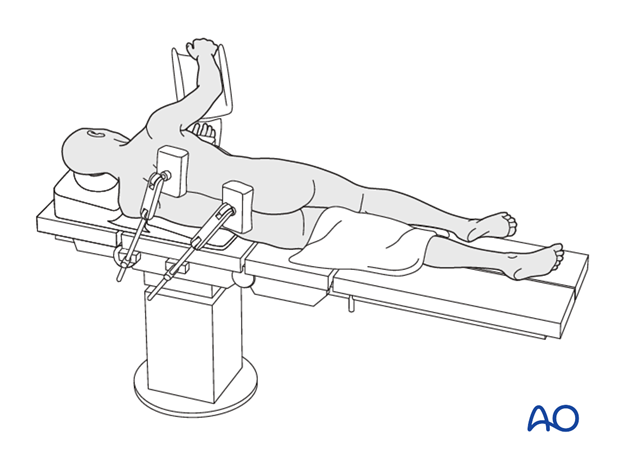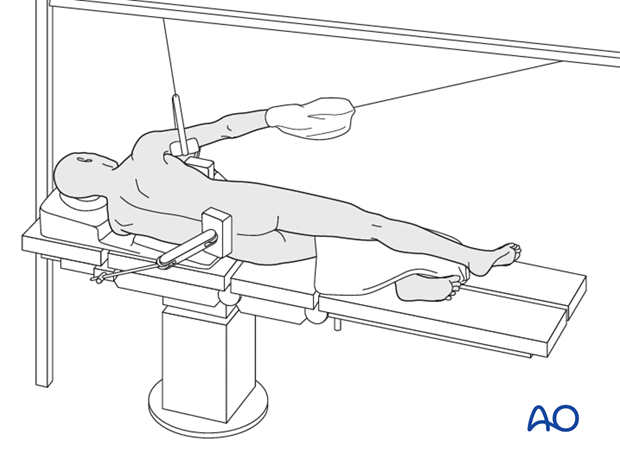Lateral
1. Introduction
Proper patient positioning is crucial as incorrect positioning will keep the surgeon from performing a successful operation.
The lateral position is used for dorsal approaches to the shoulder joint, glenoid or scapula.
2. Advantages and disadvantages
Advantage:
- The arm can move in a wide range of motion
- Facilitates concomitant arthroscopic procedures
- Dorsal approaches to the shoulder joint, glenoid, or scapula may be performed
Disadvantage:
- Difficult to get a true axial view (unless a carbon table is used)
3. Positioning
Position the patient on his side. The whole upper extremity of the injured side is scrubbed and sterilized before it is place on a padded operating room stand.
If an arthroscopic procedure is to be performed, the upper extremity has to be secured in traction.
Pad all bony points and make sure that no traction injuries to the brachial plexus occur from distraction and no compression injuries of the peroneal nerve occur from positioning.
To avoid plexus lesions of the non-injured arm the shoulder is brought slightly anteriorly. To avoid nerve injuries or pressure lesions, padding is used under the uninjured leg. Place pillows between the two legs to avoid any pressure injuries.
To keep the patient in a stable position, use ventral, pelvic and dorsal spine supports. Care has to be taken that the anterior stabilization device does not compress the abdomen.

If an arthroscopic procedure is to be performed, the upper extremity has to be secured in traction.

4. Intraoperative imaging
To achieve the standard projection of the shoulder, the C-arm needs to be tilted medially and laterally.
The beam is directed:
- 45 degrees antero-lateral (trans scapular view or epsilon view).
- 45 degrees antero-medial (trans glenoidal view).
If available, a 3D-scan using a 3D-image intensifier will give the most detail and optional imaging.













